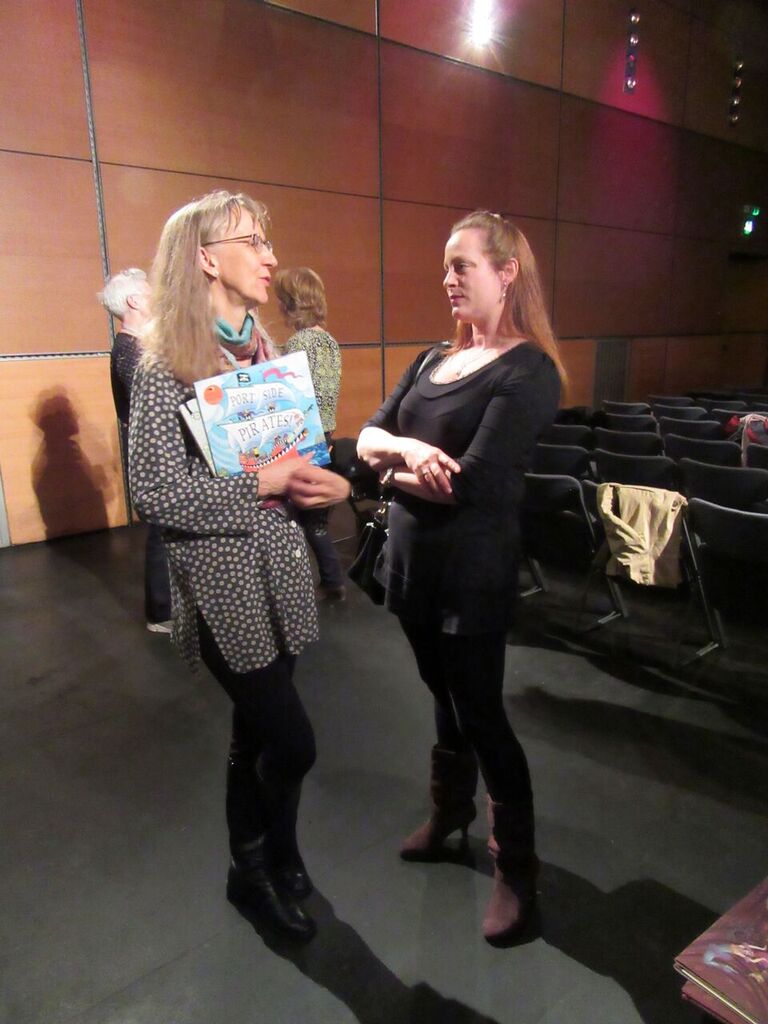Picture Hooks Conference 2016 – Session 1 with Tessa Strickland
Posted on May 4, 2016First up was Tessa Strickland, Co-Founder and Editor in Chief at Barefoot Books, an independent children’s publisher founded in England in 1993 and now based in Cambridge, MA, USA. Tessa, who acquires all of Barefoot Books’ titles, was able to give insight from a number of different perspectives, as the founder of a small independent press, a commissioning editor and a writer. She covered a lot of ground and gave us many fascinating examples but here are some of the highlights.
Tessa told us about how the illustrations for the book The Gigantic Turnip came about. Tessa was driving along the coast of Ireland when she stopped in a tiny book shop and noticed two little books with brilliant cover illustrations. She asked the publisher for the illustrator’s information and wrote to her, since it was in the days before email! It demonstrates that your work can be discovered anywhere, whether it’s on cards in a gift shop or a small run of books. Get yourself out there!
In terms of portfolios, Tessa personally doesn’t like to see quite as much detail about your process as your professors might like to. Most importantly, she’s looking to see that you can tell a visual narrative, and for sequences which show characterisation.
“Life is short, become the kind of illustrator you want to be.”
Tessa advises that life is short, so become the kind of illustrator you want to be. While it’s good to be flexible, don’t try to please everyone. Develop your own style – don’t post illustrations in multiple styles, or with multiple techniques. Learn from the masters, develop your own style and be true to yourself.
Digital portfolios are so important in the digital age, so get yourself a website. Also, make sure you use tags well to get people to your website. Is your work quirky? Fun? Gothic? Whimsical? In the age of google searches you can’t underestimate how important it is to know which adjectives describe your work.
Look at what sells, and if this subject matter and style is similar to yours, tag it on your website. If you like to paint pirates, dogs, mermaids, princesses etc. shout about it, because publishers will be looking.
Also, consider the age range your work is for. When Barefoot first started, Tessa wanted their books to be for all ages, but it didn’t suit parents or bookshops. Choose a broad category, but Tessa notes that ages 3-7 is a particularly lucrative market for picture books, so if that suits your work, make sure to shout about it on your website.
One of Barefoot’s major revenue streams is from selling books internationally which help children learn English. Tessa encourages you to go for both the trade and educational market. Don’t feel you have to box yourself in. The same goes with age ranges, you can cross over once you find your voice on the page, so have the creative conversations you want to have with your publisher.
Tessa went on to explain co-editions, the American market & licensing. With a co-edition, a British or other publisher finds publishing partners in other countries, such as France, Denmark, Italy, Mexico. These publishers provide translations and the British publisher co-prints the different editions, charging the publishing partners a unit cost for the manufacture and shipping. This enables the originating publisher to build a large print run and make the costings viable. The bigger the run, the better the margins.
Licences are completely different – here an overseas publisher buys the rights and prints the books itself. Interestingly, in countries like Israel and Japan, where they read from from right to left, publishers can’t print them as co-editions so they buy licenses.
While co-editions can be more lucrative than licences, they require a lot more effort, especially to make sure you get paid at every stage. Licenses are more straightforward.
One of the biggest differences between the children’s and adult book markets is that the children’s market is much more conservative. People want to buy books they read as children, so although it can be difficult at the beginning, once you reach classic status, it’s great.

Tessa (left) chatting before her session.
